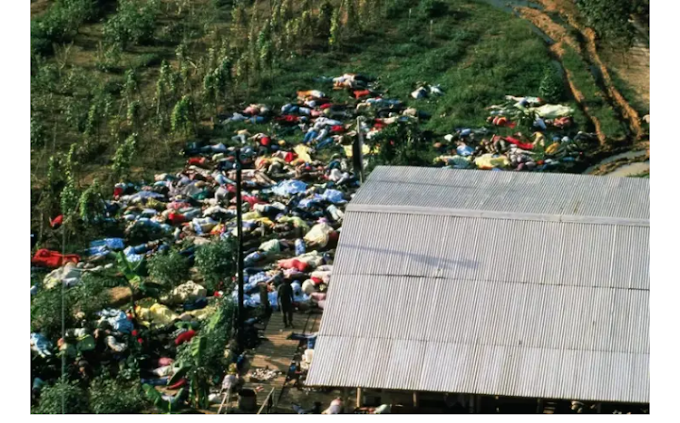Climatic CLASSIFICATION, MIcro and man-made climates
Introduction
In this lesson the purpose and problems of classifying climates are discussed. Two approaches to climate classifications, i.e. genetic and generic are examined and types of climatic classifications using each of these approaches together with their merits and demerits identified. A discussion of the importance of micro and man-made climates is also made.
Purpose and problems of climatic classification
The overriding purpose of any classification system is to obtain an efficient arrangement of information in a simplified and generalised form. The purpose of climatic classification therefore is to provide an efficient framework for organising climatic data and learning about the complex variations in world climate. Through climatic classification the details and complexities of monthly or seasonal climatic statistics are compressed into simpler forms, which are more easily understood. In short, we classify to simplify and understand the world’s complex climatic patterns.
Climatic classification though desirable is a difficult exercise. Certain problems faced in climatic classification are common to all types of classification whether of soil or vegetation. We have to acknowledge the fact that all classifications are artificial to the extent that we impose order or boundary on a complexity or continuum. Consequently, many classifications are subjective. In fact classification is more a product of human ingenuity than a natural phenomenon. In climatic classification we face other problems, which emanate from the inadequacy of available climatic data both in terms of coverage of the earth and in terms of duration and reliability. Climate is also dynamic, not static, so it fluctuates and varies over time. This of course implies that our climatic boundaries will also fluctuate. Finally, climate is a multivariate phenomenon consisting of various climatic elements. There is therefore the problem of identifying the crucial climatic parameters that constitute distinctive climatic types. The climatic elements most frequently used to characterise the climate over a given area are temperature and rainfall. Often only the average values of these elements are employed in the classification exercise. The need to consider other climatic elements cannot be overemphasized. Also average values of climatic elements must be considered alongside departures from such averages as extremes may be more significant limiting values. To overcome the problems created by the multivariate nature of climate, some classification schemes have taken the natural vegetation as an index of the climatic conditions prevailing over an area. Several non-climatic factors, however, exert control over the character of the vegetation in a given area. Such factors include topography, soil type and the effects of human activities like farming and lumbering.
Approaches to climatic classification
There are two fundamental approaches to classifications of climates.
(a) The genetic approach.
The generic or Empirical approach.
In genetic approach climatic classification is based on the climatic controls. These are the factors that determine or cause the different climates. Examples include air circulation patterns, net radiation and moisture fluxes. In the generic approach, the classification is based on observed climatic elements themselves or their effects on other phenomena, usually vegetation or man. Because the controls of climate are far more difficult to measure than the climatic elements, there is lack of suitable data for most parts of the earth. Most climatic classification schemes have therefore adopted the empirical approach for which data are more available.
Genetic classification schemes
Flohn’s classification scheme
This classification recognises seven climatic types on the basis of global wind belts and precipitation characteristics as shown in Table 3. Temperature does not appear explicitly in the classification.
Table 3: Flohn Classification Scheme
Climatic type
Precipitation characteristics
I Equatorial westerly zone
Constantly wet
11 Tropical zone winter trades
Summer rainfall
111 Subtropical dry zones
(Trades or subtropical high pressure)
Dry conditions prevail throughout the year
IV Subtropical winter rain zone
(Mediterranean type)
Winter rainfall
V Extra-tropical westerly zone
Precipitation throughout the year
VI Sub-polar zone
Limited precipitation throughout the year
VIa Boreal continental type
Summer rainfall limited, winter snowfall
VII High polar zone
Meagre precipitation summer rainfall, early winter snow fall
Strahler’s classification
This classification divides world’s climates into three major divisions - the low latitude climates, the middle latitude climates and the high latitude climates. These three divisions are then subdivided into 14 climatic regions to which is added highland climates having altitude as the dominant control. The criteria used in this classification scheme are the character of the dominant air masses and the precipitation characteristics. The classification is as follows:
I Low latitude climates- controlled by equatorial and tropical air masses
Wet equatorial
Trade wind equatorial
Tropical desert and steppe
West coast desert
Tropical wet –dry
II Middle latitude climates- controlled by tropical and polar air masses
Humid subtropical
Marine west coast
Mediterranean
Middle latitude desert and steppe
Humid continental
III High latitude climates- controlled by polar and arctic air masses
Continental sub artic
Marine sub artic
Tundra
Ice cap
Highland climates – are found in major highland areas of the world where altitude is the dormant control of climates.
Budyko’s classification
This classification of climate is based on the energy balance. The classification is based on values of the radiational index of dryness (Id) defined by the equation of the form:
Where Rn is the amount of radiation available for evaporation from a wet surface assumed to have an albedo of 0.18, L is the latent heat of evaporation and r is the mean annual precipitation.
The value of the radiational Index of dryness (Id) is less than unity in humid areas and greater than unity in dry areas. Using this index the following five major climatic types were recognized by Budyko (1956) as shown in Table 4.
Table 4: Budyko Climatic Classification
Climatic Type
Radiational Index of dryness (Id
I Desert
>3.0
II Semi-desert
2.0-3.0
III Steppe
1.0-2.0
IV Forest
0.33-1.3
V Tundra
<0.33
Budyko’s classification scheme only gives a generalised picture of the world climates owing to the fact that very few stations in the world have reliable data on the net radiative flux.
Generic/Empirical Classification Schemes
Koppen’s climatic classification scheme
This classification scheme is relatively simple and very popular. In this scheme there are five major climatic groups recognised mainly on the basis of temperature characteristics. These five groups are further subdivided on the basis of the seasonal distribution of precipitation and additional temperature characteristics to give a total of 24 climatic types as shown below.
TROPICAL RAINY CLIMATES
Af- Tropical rainforest climate
Aw- Savanna climate
Am- Tropical monsoon climate
DRY CLIMATES
Bsh- Hot steppe climate
Bsk- Cool steppe climate
BWh- Hot desert climate
BWk- cool desert climate
WARM TEMPERATE RAINY CLIMATES
Cfa- Moist in all seasons, hot-summer
Cfb- Moist in all seasons, warm summer
Cfc- Moist in all seasons, cool, short summer
Cwa- summer rain, hot summer
Cwb- summer rain, warm summer
Csa- winter rain, hot summer
Csb- winter rain, warm summer
COOL SNOW FOREST CLIMATES
Dfa- Moist in all seasons, hot summer
Dfb- Moist in all seasons, warm summer
Dfc- Moist in all seasons, cool summer
Dfd- Moist in all seasons, severe winter
Dwa- summer rain, hot summer
Dwb- summer rain, warm summer
Dwc- summer rain, cool summer
Dwd- summer rain, severe winter
E. POLAR CLIMATES
ET- Tundra
EF- Perpetual snow and ice
In this classification, the major categories (A, B, C, D, and E) are based mainly on temperature criteria. The subdivisions of each major category are made with reference to the following:
(f, m, w, s, W) refer to the seasonal distribution of precipitation.
(a, b, c, d) refer to the additional temperature characteristics.
(h, k) refer to the temperature distribution in the arid regions.
Despite its quantitative approach, objectivity, and invaluable merits as a teaching device several criticisms have been made of the scheme. The scheme has been criticised for lacking a sub-humid category; for being empirical rather than generic; for lack of justification for the use of some of the numerical criteria and even for the use of rigid boundary criteria at all in the light of lack of climatic observations over most parts of the world. Koppen’s climatic classification has particularly been criticised by Thornthwaite who described it as unsystematic, being based on a patchwork of unrelated rules and definitions. Koppen’s climatic regions are in essence vegetation regions climatically defined.
Thornthwaite’s rational classification of climates.
This classification is based on two main climatic indices
The moisture index (Im)
The annual potential evapotranspiration (P.E)
Im is given as follows Im = 100s-100D
PE
Where s is the annual water surplus and D is the annual water deficit. Using this index Thornthwite arrived at the following climatic types
Climatic Type Moisture Index (Im)
A Perhumid 100 and more
B4. Humid 80 – 100
B3. Humid 60 – 80
B2 Humid 40 – 60
B1. Humid 20 – 40
C2 Moist Sub-humid 0 – 20
C1. Dry Sub-humid -33.3 – 0.0
D. Semi-arid -66.7 - -33.3
E. Arid -100 – -66.7
Thornthwaites’s approach to climatic classification has been found useful in diverse fields such as ecology, agriculture and water resource development. Thornthwaite’s classification scheme has however not escaped criticism. Values of potential evapotranspiration on which the moisture index is based are not readily available for many areas. Thornwaites’ empirical formula for estimating values of P.E. has failed to produce satisfactory estimates over many parts of the world particularly the arid and semiarid areas. The ratio of actual evapotranspiration to potential evapotranspiration (AE/PE) has been shown to be a better index of delimiting moisture regions than the moisture index.
Climatic regions of the world
The surface of the earth can be divided into a series of regions, which have similar climates. The objective of such climatology is to understand climatic conditions likely to be encountered at any point on earth, together with an explanation of their causes and indications of their stability and variability with time. This serves two major purposes.
The information is useful for anyone with more than a passing interest in a particular place. It can provide information, for example, pertinent to the types of crops, which could possibly be grown, or the heating or the cooling requirements of housing in the area. Thus it provides an estimate of the climatic resources of an area.
The identification of regions is also important for climatology itself. If patterns in the spatial distribution of regions are found they may provide insight into the processes that are acting to create those regions. Further more, examination of these processes can lead to estimates of whether a particular region is likely to be modified over time as the result of natural or anthropogenic changes to the atmosphere or surface.
Many climate regionalization schemes have been developed over the years, either emphasising a particular set of climatic parameters perceived as important to a particular activity, or specifying in more general terms the overall world regional climate. This is the essence of the climatic classification discussed above.
Micro-Climates or Local Climates
The smallest scale of climate variations can conveniently be termed local climates or microclimates. The spatial range of these varies from a few square centimetres, the conditions around a growing plant to a few square kilometres, the climate of a city. It is the micro-climate which we experience every day that dictates what crops we grow, that determines our home heating and cooling requirements and influences our city drainage system design. It is also on the micro-scale that human beings deliberately modify the climate to help meet our needs for comfort and also the scale upon which the major inadvertent modifications have already taken place.
The local climate/micro-climate depends for its general characteristics upon the regional climate and ultimately upon the global climate system. It is therefore useful to keep in mind constantly that the local climate of a particular place is a variation of the regional climate. Indeed the mechanisms acting to create a local climate are essentially the same as those creating the global climate. The major differences are those of emphasis. In particular, the character of the surface and how it varies spatially and interacts with the overlying atmosphere are the most vital considerations.
The character of the surface includes aspects such as; the type of surface, whether it be of grass, forest, concrete, or water; the nature and size of upstanding objects such as fences, trees or tall buildings; the general topography of the area and its overall altitude, all influence the surface characteristics and their variations are the major determinant of local differences in the energy balance. The main physical consequence is that there are spatial temperature variations. These are likely to lead to air density and pressure differences, which can create local winds when the regional atmospheric conditions are favourable. These regional conditions are also greatly influenced by the surface characteristics to produce local cloud and precipitation regimes. These not only influence the local water balance but also the local energy balance thus bringing us full circle.
Therefore the factors creating local or microclimates can be summarized as follows.
Energy balance and its implications.
Surface boundary layer: - Near the surface the effects of friction on the air flow pattern are marked. Adjacent to the surface is the laminar boundary layer, a layer where there is no turbulent mixing and all heat transfer is by conduction. Above this is the turbulent boundary layer; the air is mixed as a result of instability. The thickness of these layers depends on the nature of the underlying surface. This layer extends up to the point where the geostrophic approximations become valid.
Wind profile in the boundary layer:- In order to consider further the fluxes in various atmospheric and surface conditions in more detail, it is necessary first to consider the variation of wind speed with height, the “wind profile”.
Fluxes in the turbulent boundary layer:- The amount of turbulent mixing is largely controlled by the wind speed and its rate of change with height (wind profile).
Importance of surface physics: - The flow of heat into the underlying medium is the final component of the energy balance. The contrast between land and water, which allows both conduction and convection, is well known.
Man made climates
The scale of local climate/micro-climate is, by our definition, the scale at which mankind operates. On a local scale humans can modify the climate deliberately or inadvertently, and can take steps to utilise it as a resource or avoid its adverse impacts.
Inadvertent modification of climate involves any change in the surface characteristics by human agency that leads to a climate change. Examples would include the creation of a city or clearing of a forest for farming activity etc. These are essentially local scale phenomena and indeed it is on this scale that the major modifications have taken place. However, consistent local modifications that take place at a large number of sites could combine to produce coherent regional or even global alternations in climatically important parameters as in global warming.
Deliberate modifications of climate also take place on a local scale. Such intentional climate modifications include;
Crop protection climatology: - This aims at preventing the temperature of valuable crops to fall below freezing e.g. by use of smoke generating heaters within the area to be protected. The purpose is to warm the air directly and efficiently.
Local scale climate engineering: - Frost is also of concern to the transportation industry. Railroad switches (railway points) in areas prone to frost and icing are frequently electrically heated, while some sensitive intensely used roadways have electrical heaters built into their roadbed. This is most commonly found on bridges, which lack the thermal inertia of the land based road and is thus more sensitive to temperature changes.
Cloud seeding
This is used for both precipitation augmentation and cloud dissipation. The basis for such modifications is artificial stimulation of the Bergeron-Findeisen process. Cloud seeding can only be undertaken when a cold cloud is already present and so serves as a means of precipitation augmentation, not’ rainmaking’ in an area with no naturally occurring chance of rain. Due to this restriction it is extremely difficult to demonstrate vigorously that a specific cloud seeding project has led to increase in rainfall. Nevertheless, the balance of evidence suggests that the technique is useful in areas where a small increase in precipitation can lead to significant economic gain. Hence, for example, it is widely practised in the somewhat marginal agricultural areas of the American Midwest and in South Africa. It is also used to augment winter snowfall in the American Rockies, helping to enhance the amount of water in that frozen reservoir, which will become available in subsequent growing season.
Attempts are being made to use cloud seeding techniques to modify the microstructure of clouds as an aid to hail suppression. If a large number of small hailstones can be produced to replace a small number of large ones, there is likely to be a decrease in the damage the hail causes. This technique has been experimented in the tea growing areas of Kericho without much success.
Summary
In the lesson we discussed the purpose of climatic classification, which is mainly to simplify and understand the world’s complex climatic patterns. We identified the main problems experienced in classifying climates and how they can be solved. A comparative discussion of genetic and generic approaches used in climatic classification was done, using examples of specific types of classification schemes. A discussion of the micro-climates and man-made climates was done for the purpose of contrasting them with the regional climates derived from climate classification.
Definitions of Key Words
Climate Classification is an efficient framework of organizing climatic data in order to simplify and understand the complex variations in world climate
Cloud Seeding is a technique where certain condensation enhancing chemicals are sprayed in the cloud for either precipitation augmentation or cloud dissipation
Generic Climate Classification is a classification based on observed climatic elements themselves or their effects on other phenomena such as vegetation and humans
Genetic Climate Classification is a classification based on climatic controls such as air circulation patterns, net radiation and moisture fluxes.
Man-made Climate is the climate that is modified either deliberately or inadvertently by human activity
Microclimate is the smallest scale of climate variation with a spatial range varying from a few square centimetres (i.e. condition around a growing plant) to a few square kilometres (i.e. climate of a city)
Revision Questions
Attempt a classification of the climate of East Africa using generic approach
Using examples of other classification schemes not discussed in this chapter, examine the strengths and weaknesses of genetic and generic approaches of climate classification.
Explain how human activities in your locality influence its microclimate.
Further Reading
Barry, R.G. and Chorley, R. J. 1976. Atmosphere Weather and Climate. Methuen and Co. Ltd.
Chritchfield, H.J. 1966. General Climatology Prentice hall Inc.
Dann, W.L. 1975. Meteorology, McGraw-Hill Co. New Jersey.
Mather, J.R. 1974. Climatology, Fundamentals and Applications McGraw-Hill Co.
Neiwolt, S. 1977. Tropical Climatology, An Introduction to the climates of the Low Latitudes, John Wiley and Sons Chichester
Oliver, J.E. and Hidore, J.J. 1984. Climatology: An Introduction. Bell and Howell Co. Toronto


.jpeg)










.jpg)















.jpg)



